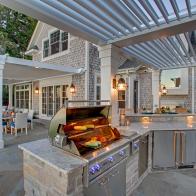1 / 9
8 GREEN BUILDING MYTHS, BUSTED
Green building -- or sustainable building -- involves incorporating eco-friendly elements into the design and maintenance of a home and minimizing the impact on the environment when building houses, condos and the like.
More homeowners and builders are interested in green building and want to choose energy efficient features for their homes, so it's important to know what's fact and what's myth. Peter Yost of BuildingGreen LLC in association with GreenBuildingAdvisor.com addresses eight common green building myths.
.-Battle-on-the-Beach-courtesy-of-HGTV.-.jpg.rend.hgtvcom.196.196.suffix/1714847929029.jpeg)







